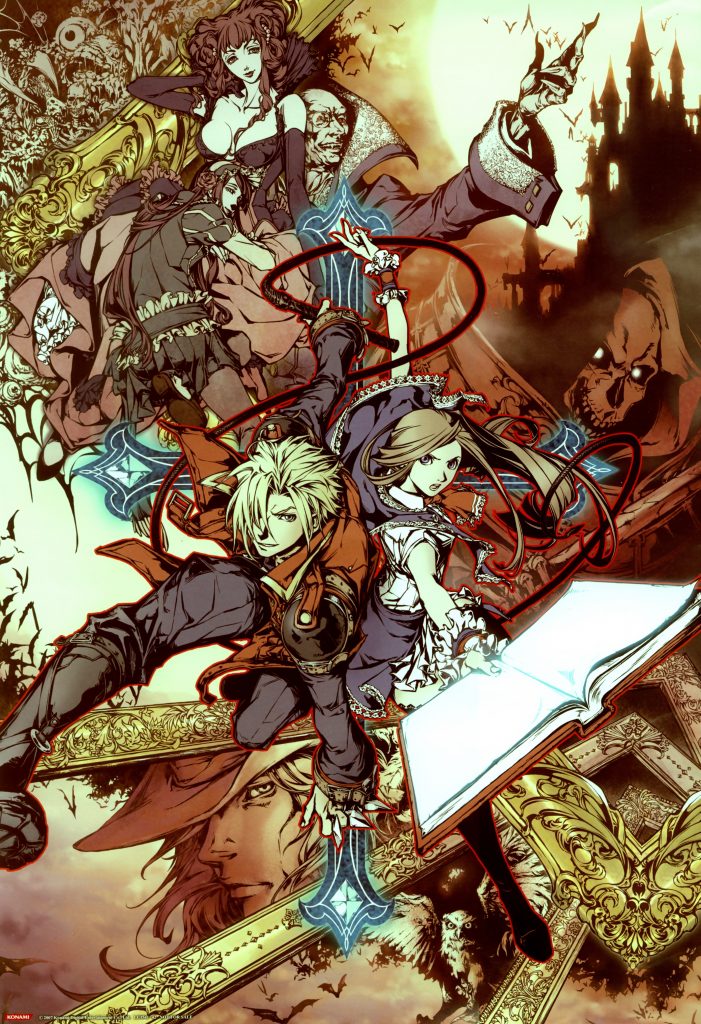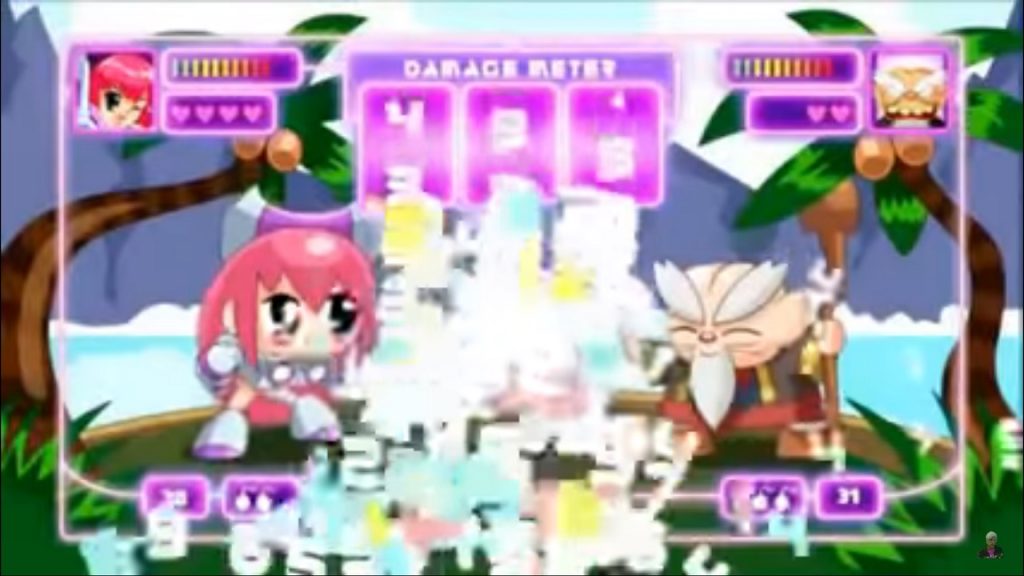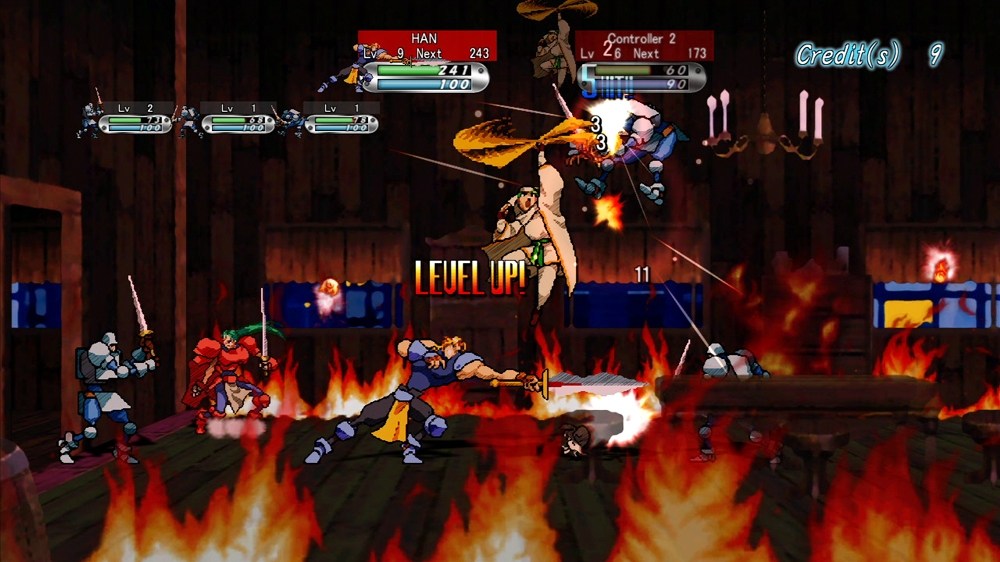
I feel terrible for compressing this image.
This article was originally going to be of a literary nature, examining an important antecedent to pulp and science fiction. But in keeping with this column’s increasingly motley topics, I decided to write about the only medium I haven’t yet covered; games. And while I know many times less about RPGs of any kind than Jeffro or Morgan have forgotten, there is an interesting observation I can add.
Now, in the West, Gygax’s Dungeons and Dragons and future RPGs arose from a rich tapestry of pulp, fantasy, and science fiction. They were about creating an original world and having the player take on a fictional role, immersing himself in and becoming that character. There were various rules and systems to facilitate this, but the goal was always to become a different character and interact with the environment in a creative manner.
The Japanese looked at all this, thought for a while, slowly stroked their chins, and then jumped up and exclaimed, “AHA! NUMBERS!!”
Many Japanese RPGs, or JPRGs, are not even RPGs in the traditional sense. They’re games in a fantasy setting where the goal is to get your numbers higher. Higher character levels, higher attack, higher defense, higher HP, higher mana, etc. Now, there is undeniably something pleasurable about seeing one’s numbers rise. Banal thought it may be, this basic progression is present in the vast majority of games, including damned good ones. JRPGs simply take it to the extreme, making it their primary focus.

“Too many numbers!!” exclaims Princess Robot Bubblegum
Dragon Quest became a massive success in Japan in 1986, and the series introduced one year later, Final Fantasy, was a huge hit domestically and in the European and American markets.
Personally, I’ve never cared for any of the games in either series, or the countless imitators they spawned. The stories suck; why wouldn’t I read a half-decent fantasy if that’s what I wanted? And the combat is about as complex and interesting as Tic-Tac-Toe. Even the tiny dose of strategy necessary to win battles can be ignored in favor of simply grinding repetitive monster battles to get those damn numbers higher. Hell, in some games in those series, you NEED to grind to progress. As for the immersion that actual RPGs are based on? Don’t make me laugh; there is never a sense that you embody a spiky-haired freakshow protagonist, interact with the world in unique ways, or even meaningfully change the story. It’s as scripted as any other game.
So should I simply dismiss turn-based JRPGs in the way most people dismiss cow clickers like Farmville or Candy Crush? Not quite!
Because while the two early flagship series are nothing to write home about, and have evolved shockingly little over 30 plus years, the systems they are introduced can work beautifully…in other games.
Secret of Mana is not turn-based, but frequently considered a JRPG. I disagree; it’s just a fantasy action/adventure with a bit more interaction and story than console games in the genre had back then. (Otherwise, why isn’t something like Shovel Knight a RPG?) Well, it uses the same fundamental systems introduced by JRPGs of the 80s. You have your inventory with armor and weapons, all with various stats, levels for your heroes and their weapons, and even a party following you. Numbers, numbers, numbers! And yet, it works beautifully, and the game is great, especially for when it was released. In the context of regular adventuring and combat, seeing those numbers rise is a joy, and it doesn’t feel like you’re being cheated.
See, in standard JRPGs, you’re frequently doing the same actions whether you’re fighting a slime or the evil Mega Death Lord. Numbers rising is a trick to make you think something has changed. Yes, there are new abilities and spells you learn at higher levels, but it’s essentially the same.
With something like Secret of Mana, there IS a tangible difference; later enemies have more complex attack patterns, take more attacks to defeat regardless of your numbers, requires greater use of available game mechanics, etc. Thus, numbers rising feels like a natural, organic part of one’s progression.
Another great example is what are called “Metroidvanias”, a series of Castlevania games released by Koji Igarashi, starting with Symphony of the Night. These games got rid of some of the platforming elements of classic Castlevania, including dying by falling down pits, in favor of iteratively exploring a vast terrain as one obtains new gear and abilities, like in the Metroid series. The numbers, including gold that you can use to pay a merchant for goods, is never the main focus. That would be the combat and exploration. But it’s a nice bonus that gives the series more flavor. It even adds a small element of strategy to the game, as certain weapons can be weak against one type of enemy and strong against another. Or certain spells can be powerful in one instance and nearly useless in another. Seeing the numbers dropping each time an enemy is hit allows one to adjust and plan accordingly.

Just looking up this screenshot makes me want to play the game again.
There are even some downright surprising instances of where this JRPG system works. My favorite side-scrolling beat em’ up ever is Guardian Heroes, which yet again uses a system inspired by those 80’s games, including allocating stat points and dialogue trees that change the outcome of the story. Yes, even in a beat em’ up, I like JRPG systems more than in actual turn-based JRGPs!
This also teaches us that simply because we dislike something this doesn’t mean we can’t glean something insightful or beneficial from it. Like, for instance, the knowledge that large, spiky hair appeals to angsty teens and the Japanese alike.
Gens 1 through 3 of Pokemon are great games and you will never convince me otherwise.
-
IMO the 4th and 5th generation are probably the best (the “enhanced versions” in particular) but man oh man are the 3DS games a step down. Easier battles with smaller opposing teams and the maps got simplified to where there’s barely any exploration (7th gen is especially bad about this).
But hey, 3D.